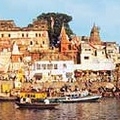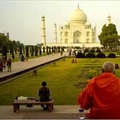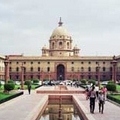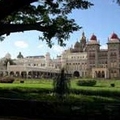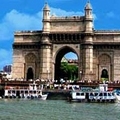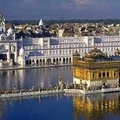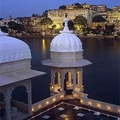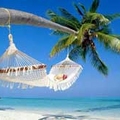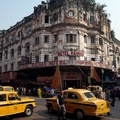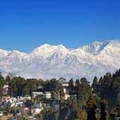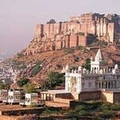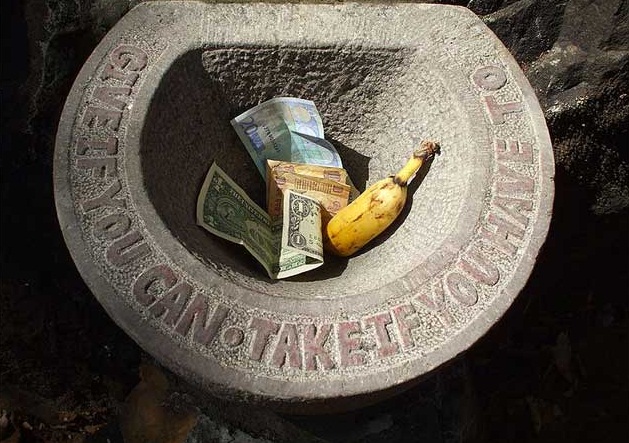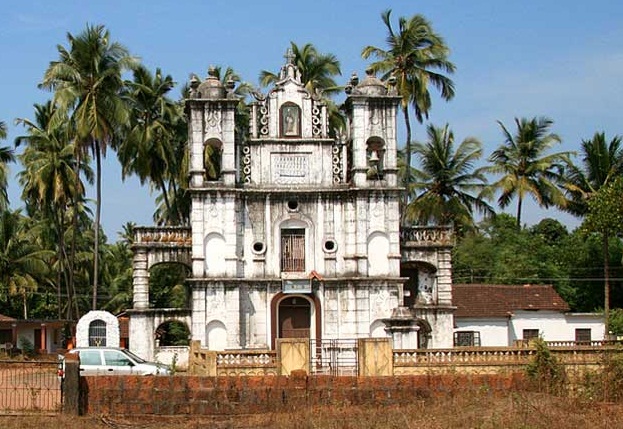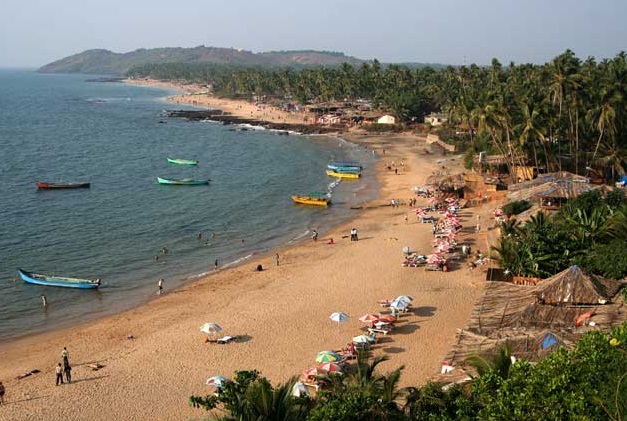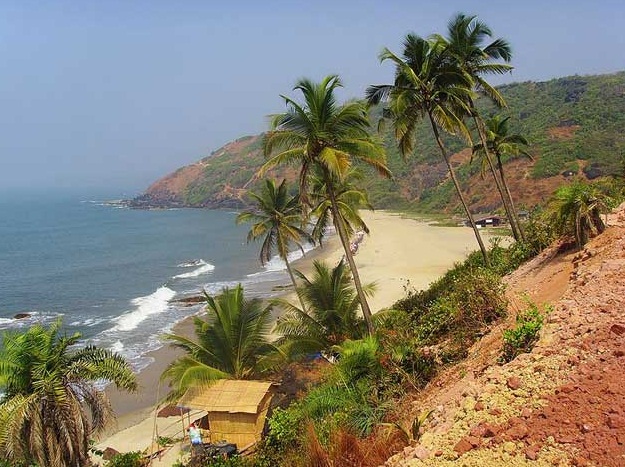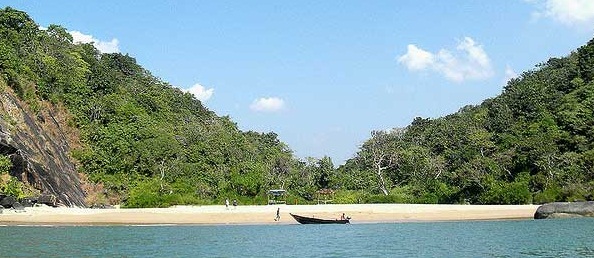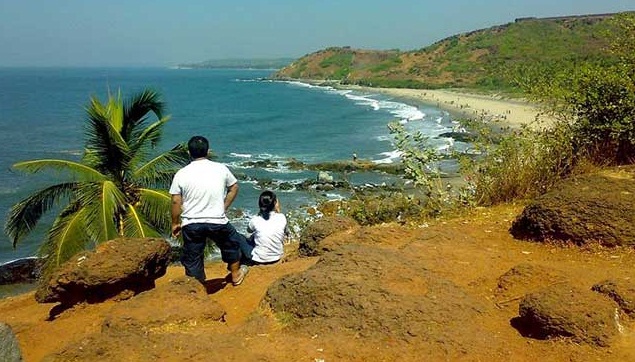Destinations / The Best Cities to Visit in India / Goa - The Realm of White Beaches
Goa - The Realm of White Beaches
Swaying palms, white sand and clear water, three main factors that attract in Goa over 2 million tourists annually, far more than the residents of the state. The attractiveness of the resort is mainly due to the beautiful beaches stretching along the coast. For many Goa is associated with beaches, hippies, hedonism and nightly entertainment in the moonlight. But the popular resort of India can offer much more than a fun experience under your feet,nice soft sand of beautiful beaches. On the one hand, Goa is not only beaches, stretching for 100 km along the coastline of the Arabian Sea. Besides the beaches, the state is known for the ancient temples and undulating farmland that attracted European traders spices here. For several centuries before the arrival of the hippies there were the Portuguese, whose cultural influence can still be found everywhere: in the exquisite architecture of the churches and temples, the local cuisine and the melancholy melodies Fado (Fado - the style of traditional Portuguese music) sounding in the streets. The most hospitable state in India is the most European by 450 years of Portuguese rule.
Goa: general information
Goa is located on the west coast of India. Although it is the smallest of all the Indian states, it played a remarkable role in the history of the state. Goa was one of the major trading centers of India, attracting conquerors, sailors, merchants, traders, monks and missionaries in the early stages of its history. Pursuing an active foreign trade with the Greeks, Romans, Arabs and Europeans, Goans interact with the outside world much sooner and more often than normal Indians. So the locals are very friendly to foreigners and Goa is called the most hospitable state in India. In contrast to the rest of India, European tourists are not the object of attention of the local population, even in rural areas. The jewel in the crown of the Portuguese empire was captured in 1510 and remained a foreign colony until 1961, when the Indian army finally put an end to centuries of alien rule. Through 450 years of Portuguese rule, Goa is very different from the other states of India, here there is a completely different atmosphere compared to the rest of the country. Separated from the mountains of British India and spacious alluvial plains, the prosperity of Goa was based largely on the trade with the coming decline of Portuguese empire. Over the past two thousand years, Goa has experienced many incursions of the conquerors. The Portuguese colonizers were the last of them. When, in 1498, Vasco da Gama first arrived here in the "search for Christians and spices" the Muslim controlled the port of Goa which had flourished actively trade in these most spices. The Portuguese came here with a sword in one hand and a cross to the other. Vasco da Gama was unable to find a Christian here, but thanks to him and his compatriots, there are many Christian believers (today 30% of the population are Catholics). In the second half of the 20th century there was another "invasion", this time with many hippies over the world, but mainly from Western Europe and the USA. Each of the colonialists left an indelible imprint on the culture of the white Roman Catholic Church (built on the site of the destroyed ancient Hindu temples) and colonial mansions to massive beach parties under the moonlight and the overall drug use. Nowhere in India you will find such a laid-back lifestyle and tranquil nature of the inhabitants, as in Goa.
The lifestyle of Goans is called susegad. This word comes from the Portuguese word socegado (quiet), and implies a laid-back and relaxed attitude to life, forgiveness, tolerance, absorption in the tropical apathy, adherence to the sea, which is said to have developed historically in Goa. Perhaps that is why its inhabitants tolerant attitude to the fans thirst for pleasure, suiting noisy parties on the beaches of the Arabian Sea and consume large amounts of hashish. Hippie in America and Western Europe have put Goa on the map Travel in the 1960s. It drew a hippie beauty of nature, friendly attitude of inhabitants, low prices (rent a hut on the beach for a few weeks at the time was worth a few dollars) and hashish, which remained completely legal until the mid-1970s. Hippies staged a party (Goa-party), which has the attributes of the beach, a bonfire, electronic music, dancing and, of course, drugs. Dinner parties were held on the beaches of Anjuna, Vagator and Calangute in the period from November to April and they lasted until morning. The experiments with electronic music under the influence of drugs generated Goa-Trance - the well-known style of trance music style, eventually had won popularity in many countries around the world. Gradually, the parties have gained enormous popularity in the early 1990s, the number of participants reached 1,500 people, ecstasy has become the most popular drug in Goa, the state talked about as a "Paradise for drug addicts from all over the world." This state of affairs could not but cause concern for authorities. Frequent police raids, the court banned the loud music, state governments were trying to get rid of its image as a hippy hangout.
Despite its small size, Goa is one of the most economically developed states in India with the highest GDP - two and a half times more than in the whole country, largely due to tourism. It has the highest literacy rates and the lowest number of poor in comparison with the rest of India. Tourism is the main branch of economy, the state receives 12% of all foreign tourists of the country. Goa has two main tourist seasons: winter and summer. In the period from November to March, the beaches of Goa are filled mainly by tourists from Europe and Russia, enjoying the beaches and pleasant weather. During the summer (it is the rainy season), tourists come from different regions of India, to spend their vacation.
Tourism is generally concentrated in the coastal areas of Goa. In the inner areas of the state tourism is underdeveloped. In 2010, Goa was visited by more than two million tourists, about 1.2 million of whom were from abroad. The subtropical climate of Goa is ideal for the cultivation of various fruits and spices. Coconut, cashew, betel palm, papaya, pineapple, cardamom, turmeric, vanilla, curry, cinnamon, nutmeg, ginger, pepper, cloves grow very well. The cultivation of spices has been active in Portuguese. Some farmers offer trips on their plantations and even offer tourist accommodation on their farms. On some farms, tourist industry has become the main source of income, many coaches come to them every day. Others focus primarily on agriculture, thus allow casual visitors to get an idea about growing vegetables and spices, to get acquainted with traditional methods of agriculture of Goa. Today, the tours on the farm, planting herbs, are one of the most interesting attractions of the tourism industry.
Although the administration of the state is divided into North and South Goa, the two areas do not differ from each other. The North and the South Goa are very similar to each other, each has its own "coastal" and "inner" areas. Both areas have a common history and together were under Portuguese administration. Most tourists arrive first at the airport Dabolim, which is the only airport of the state. The nearest town from the airport is Vasco da Gama, named after the great Portuguese explorer. It can be reached by train from the capital Delhi , but a considerable distance - almost 2,000 km. Many tourists visit the beach resort of transit through Mumbai .
The oldest city is the Old Goa, built in the 15th century, by the Sultanate of Bijapur who ruled here. It served as the capital of Portuguese India in the 16th century until the 18th century, when it was abandoned because of malaria epidemics. Since then, the capital moved to the city of Panaji. There remained a number of monuments of Portuguese colonial architecture.
The modern state capital is the city of Panaji. It is located on the left bank of the River Mandovi on the terraces of the hills . The city center is a cluster of concrete buildings with quaint balconies and tiled roofs, built in Latin style. On the main square are baroque churches, beautiful houses, cobblestone streets. The tourist season in Goa lasts from mid-November until mid-February, but the best time to visit is from the end of December and early January. For example, Delhi is best to visit in late October - early November during the celebration of Diwali (Hindu festival, the largest in India), Goa is the most attractive on Christmas Eve and New Year.
Beaches of Goa
One of the main reasons for visiting Goa are its beaches. There is about 100 km of coastline and there are about 30 beaches. They are divided on the beaches of North and South Goa. The further north or south you are going from the center, the less frequently visited beaches you will find. To talk in detail about all the beaches is not necessary, I will describe only the most famous of them.
Paola Beach
Paola is one of the most beautiful beaches in Goa. The beach is about 1.6 kilometers long, crescent-shaped looking wonderful at both ends. A beautiful natural harbor is surrounded by high promontories on both sides, the bottom of the sea goes smoothly and allows the water to go up to 100 meters, the waves are calm, so swimming is safe. In the huts along the beach or in the village near the beach, the local fishermen live, as well as foreign tourists. Unfortunately, Paolo is crowded with tourists and traders. Sometimes it's hard to walk on the beach at high tide because of the restaurants, almost bordering on the water and you will certainly be asked several times about your plans for lunch or dinner. Paola Beach was a heaven for former CIA operative and professional killer Jason Bourne (played by Matt Damon) in the Hollywood movie The Bourne Supremacy (2004). The initial film footage gives a good idea of the true natural beauty of the beach - its crescent shape on one end where is located a small island covered with trees.
On this small island adjacent to the beach on the north side of Paola, there is a stone sculpture created by the American conceptual artist Jacek Tylitski titled "Give if you can - Take if you have to ." The stone sculpture is called a monkey and it became a place of pilgrimage for tourists, people can leave or take the money at their discretion. From Paola beach at low tide you can walk to get to the island of Butterflies ( the Butterfly Island). On the island there are many paths for walking and exploring the island, as well as a small but very beautiful and deserted beach. You will need a boat to get to the beach, but the visit is worth it. Beautiful beach, isn't it?
Anjuna Beach
In Anjuna is the church of St. Michael. It was founded in 1595 and it is dedicated to the archangel Michael. The village is the hometown of the famous and the popular British musical group Above & Beyond. Here is their recording studio (Anjunabeach), hence the weekly broadcast radio show Trance Around the World. In 2009 they released a track called Anjunabeach. Anjuna is famous worldwide for its trans partying on the beach during the tourist season. Anjuna took the main influx of hippies in Goa in the 1960s and 1970s. There is also a famous flea market where you can buy many things from food and ending with jewelry and clothing. The flea market in Anjuna runs on Wednesdays and is opened from morning until late evening. It attracts buyers from all over the north of Goa, who are especially noticeable in the increased traffic on the roads of the village. To the south of the village is the Anjuna beach with many restaurants and bars. Not the most attractive beach in Goa, as a rule, a lot of tourists, the coast of the reef under the water uncomfortable for swimming, in spite of all these, there you can have a good time. In Anjuna there is one of the most popular night clubs in Goa - Paradiso.
Vagator Beach
Vagator Beach is surrounded by steep red cliffs and the Cape is divided into two main beaches. The beach Ozran is called the Little Vagator beach. Near the beach is located a hill fort of Chapora, founded in the early 17th century. If you are looking for a place where many young people are and going places for large parties, then you need to visit the popular beach Vagator, located a few kilometers away from Anjuna. During the peak tourist season, it gathers a large crowd. They arrange trance parties. New Year, usually gathers huge crowds of tourists, thousands. In the tourist season a party suits every Sunday, the evening program is lead by DJs from Germany, Sweden, England, France, Italy and Israel. Good music, cheap alcohol, noone refuses.
Arambol Beach
If you like the quiet atmosphere, about 30 miles north of Vagator Beach is the beautiful beach of Arambol . It is the northernmost beach in Goa, about an hour's drive from the airport Darbolim. The beach attracts many foreign tourists during the winter months from November to March. Arambol has a distinct bohemian atmosphere that is so difficult to find on other popular beaches. Apart from Vagator, Anjuna and Paolo, Arambol is one of the most beautiful beaches in Goa. The quiet atmosphere attracts visitors from other beaches nearby. Arambol beach is relatively quiet except Sunday, when huge crowds of locals gather and organize big events.
Basilica of Bom Jesus
Basilica of Bom Jesus is one of the best examples of baroque architecture in India, included in the UNESCO World Heritage List. The church is located in Old Goa. The age of the Basilica of Bom Jesus is more than 400 years. This is one of the oldest churches in Goa and India. The Basilica reflects a milestone in the whole history of Christendom. It houses the remains of St. Francis Xavier, a very close friend of St. Ignatius Loyola, with whom he founded the Society of Jesus (Jesuit Society). Francis Xavier died on the island Shanchuandao during a trip to mainland China, on December 2, 1552. His body was first buried on the island, then moved to Malacca and after two years from the date of death was sent to Goa. The remains of the saint attracted a huge number of believers (Christians and non-Christians) from around the world, especially during public viewing of the remains of its once every ten years (the last one took place in 2004). They say that the relics of the saint possess miraculous powers of healing. He was canonization by Pope Gregory XV on March 12, 1622.
The Cathedral of St. Catherine
The Cathedral of St. Catherine is located in Old Goa and it is dedicated to Catherine of Alexandria. The Cathedral is the seat of the Catholic Archbishop of Goa and the Archbishop of Eastern India. This is one of the oldest and the most famous places of worship of the State and one of the largest churches in Asia. The Cathedral was built in honor of the victory of the Portuguese over the Muslim army, which led to the capture of Goa in 1510. Victory Day fell on the feast of St. Catherine, so the church is named after a Christian Martyr. The actual construction of the cathedral began in 1562 and was finally completed in 1619. The original church had two towers, but one of them collapsed in 1776 and since has never recovered.
Others The Best Cities to Visit in India .
Others from The Best Cities to Visit in India
You can stay at different hotels and chalets in India, which are available in abundance.
You can even opt for holiday rentals apartments which can be found in all towns.
There are various holiday villas in many cities to promote tourism.
Here, we present the top cities with landmark tourist spots as well.
Geographical position India is a country in South Asia.
India is the 7th place in the hierarchy of countries by area, second only to the number of inhabitants and democracy to most people.
Neighborhood India has a coastline with a length of seven thousand kilometers and the western border with Pakistan, Nepal, China, Bhutan and Bangladesh in the northeast and Mynmar in the east.
In the Indian Ocean, it is adjacent to Sri Lanka, Maldives and Indonesia.
The Relief India has three natural regions: the region of high mountains, Indo-Ganges Plain and the Deccan Plateau.
The region of high mountains in the north and northeast of the country comprises most of the Karakorum Mountains and part of the Himalaya Mountains.
High mountains covered with snow are persistent, there are many glaciers which are strongly fragmented by rivers.
Indo-Ganges is an alluvial plain, low and smooth.
The landscape is formed from the large Indian peninsular Deccan Plateau with sharp edges which are based on coastal plains.
The most important river of India is the Ganges.
Climate The climate of India is tropical monsoon with different shades, depending on the altitude and the available relief.
In the Northeast and in some areas protected from the wind very little precipitation falls on the Deccan Plateau, western slopes of Western Ghat region at the foot of Himalaya receive a large amount of precipitation.
Tourism Home of the Hindu civilization of the valley, the center of trade routes and vast empires, India has played a major role in the human history.
Brahmanism, Hinduism, Sikhism, Buddhism and janismul originated in India, while Islam and Christianity enjoy a rich tradition here.
Colonized as part of the British Empire in the nineteenth century, India gained independence in 1947 as a unified nation after sustained effort made in this direction.
Population, creatures,the geographical and climate system are among the most diverse in the world.
You may also remember that India is the home of pepper.

